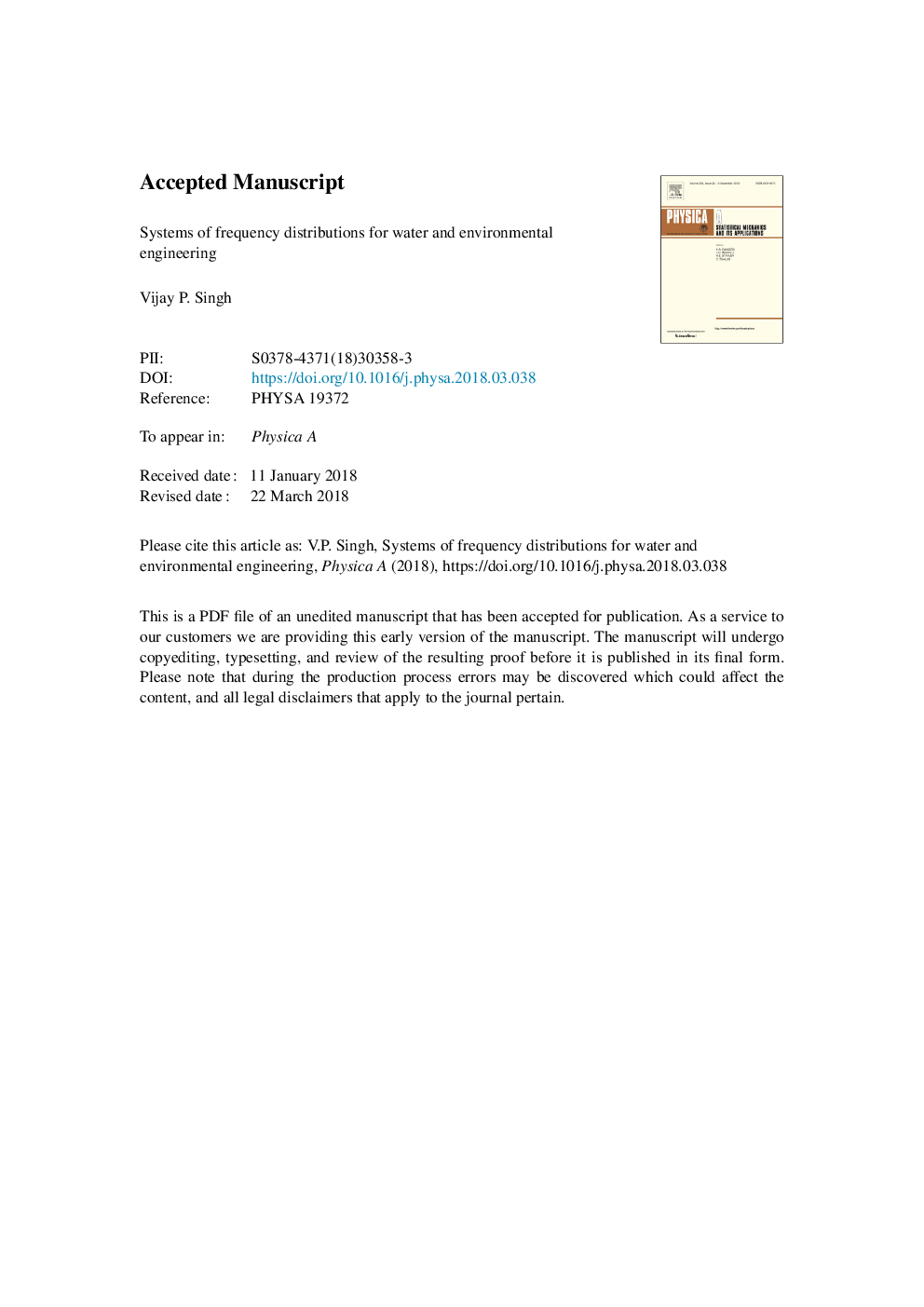ترجمه فارسی عنوان مقاله
سیستم های توزیع فرکانس برای مهندسی آب و محیط زیست
عنوان انگلیسی
Systems of frequency distributions for water and environmental engineering
| کد مقاله | سال انتشار | تعداد صفحات مقاله انگلیسی |
|---|---|---|
| 85724 | 2018 | 64 صفحه PDF |
منبع

Publisher : Elsevier - Science Direct (الزویر - ساینس دایرکت)
Journal : Physica A: Statistical Mechanics and its Applications, Volume 506, 15 September 2018, Pages 50-74
ترجمه کلمات کلیدی
توزیع فرکانس، تولید توابع، معادلات دیفرانسیل، عملکرد بسل، تغییرات کشش توزیع،
کلمات کلیدی انگلیسی
Frequency distributions; Generating functions; Differential equations; Bessel function; Transformations; Distribution elasticity;
ترجمه چکیده
طیف گسترده ای از توزیع فرکانس در مهندسی هیدرولوژی، هیدرولیک، محیط زیست و منابع آب استفاده می شود. این توزیعها ممکن است ریشه های متفاوت داشته باشند، بر اساس فرضیه های مختلف و متعلق به سیستم های تولیدی مختلف هستند. بررسی ادبیات نشان می دهد که سیستم های مختلف توزیع فرکانسی در علوم و مهندسی به طور کلی و مهندسی محیط زیست و آب به طور خاص با استفاده از رویکردهای مختلف (1) معادلات دیفرانسیل، 2) کشش توزیع، 3) نظریه ژنتیک، (4) تولید توابع، (5) تبدیل، (6) تابع بسل، (7) گسترش، و (8) حداکثر شدن آنتروپی. این مقاله این سیستم های توزیع را بازبینی می کند و فرضیه های مورد استفاده برای یافتن این سیستم ها را مورد بحث قرار می دهد. همچنین براساس شواهد تجربی، یک سیستم کلی دیگر توزیعها را پیشنهاد می کند و تعدادی توزیع از این سیستم عمومی را که در مهندسی محیط زیست و آب استفاده می شود، به وجود می آورد.

